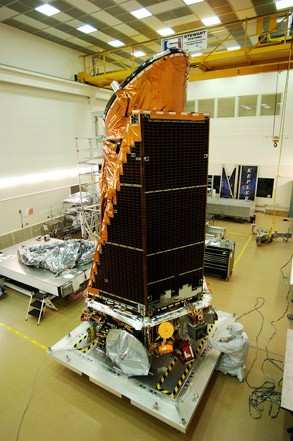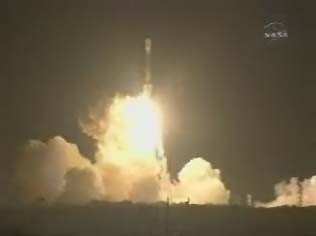Orbiting Telescope Designed To Find Earth-Like Planets
 NASA's Kepler space telescope, designed to find Earth-size
planets in the habitable zone of sun-like stars, has discovered its
first five new exoplanets, or planets beyond our solar system.
NASA's Kepler space telescope, designed to find Earth-size
planets in the habitable zone of sun-like stars, has discovered its
first five new exoplanets, or planets beyond our solar system.
Kepler's high sensitivity to both small and large planets
enabled the discovery of the exoplanets, named Kepler 4b, 5b, 6b,
7b and 8b. The discoveries were announced Monday by the members of
the Kepler science team during a news briefing at the American
Astronomical Society meeting in Washington.
"These observations contribute to our understanding of how
planetary systems form and evolve from the gas and dust disks that
give rise to both the stars and their planets," said William
Borucki of NASA's Ames Research Center in Moffett Field, CA.
Borucki is the mission's science principal investigator. "The
discoveries also show that our science instrument is working well.
Indications are that Kepler will meet all its science goals."
Known as "hot Jupiters" because of their high masses and extreme
temperatures, the new exoplanets range in size from similar to
Neptune to larger than Jupiter. They have orbits ranging from 3.3
to 4.9 days. Estimated temperatures of the planets range from 2,200
to 3,000 degrees Fahrenheit, hotter than molten lava and much too
hot for life as we know it. All five of the exoplanets orbit stars
hotter and larger than Earth's sun.

Kepler Telescope NASA Photo
"It's gratifying to see the first Kepler discoveries rolling off
the assembly line," said Jon Morse, director of the Astrophysics
Division at NASA Headquarters in Washington. "We expected
Jupiter-size planets in short orbits to be the first planets Kepler
could detect. It's only a matter of time before more Kepler
observations lead to smaller planets with longer period orbits,
coming closer and closer to the discovery of the first Earth
analog."
Launched on March 6, 2009, from Cape Canaveral Air Force Station
in Florida, the Kepler mission continuously and simultaneously
observes more than 150,000 stars. Kepler's science instrument, or
photometer, already has measured hundreds of possible planet
signatures that are being analyzed.
While many of these signatures are likely to be something other
than a planet, such as small stars orbiting larger stars,
ground-based observatories have confirmed the existence of the five
exoplanets. The discoveries are based on approximately six weeks'
worth of data collected since science operations began on May 12,
2009.
Kepler looks for the signatures of planets by measuring dips in
the brightness of stars. When planets cross in front of, or
transit, their stars as seen from Earth, they periodically block
the starlight. The size of the planet can be derived from the size
of the dip. The temperature can be estimated from the
characteristics of the star it orbits and the planet's orbital
period.

Kepler Launch NASA Photo
Kepler will continue science operations until at least November
2012. It will search for planets as small as Earth, including those
that orbit stars in a warm habitable zone where liquid water could
exist on the surface of the planet. Since transits of planets in
the habitable zone of solar-like stars occur about once a year and
require three transits for verification, it is expected to take at
least three years to locate and verify an Earth-size planet.
According to Borucki, Kepler's continuous and long-duration
search should greatly improve scientists' ability to determine the
distributions of planet size and orbital period in the future.
"Today's discoveries are a significant contribution to that goal,"
Borucki said. "The Kepler observations will tell us whether there
are many stars with planets that could harbor life, or whether we
might be alone in our galaxy."
 ANN's Daily Aero-Linx (05.06.25)
ANN's Daily Aero-Linx (05.06.25) ANN's Daily Aero-Term (05.06.25): Ultrahigh Frequency (UHF)
ANN's Daily Aero-Term (05.06.25): Ultrahigh Frequency (UHF) ANN FAQ: Q&A 101
ANN FAQ: Q&A 101 Classic Aero-TV: Virtual Reality Painting--PPG Leverages Technology for Training
Classic Aero-TV: Virtual Reality Painting--PPG Leverages Technology for Training Airborne 05.02.25: Joby Crewed Milestone, Diamond Club, Canadian Pilot Insurance
Airborne 05.02.25: Joby Crewed Milestone, Diamond Club, Canadian Pilot Insurance





